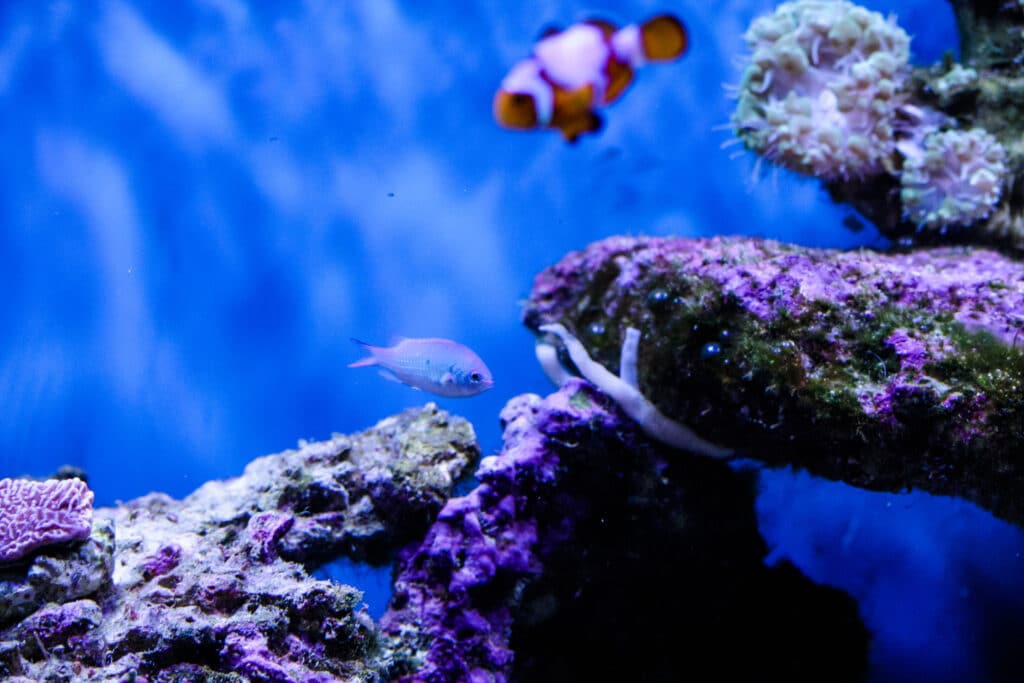Chalice Coral: A Comprehensive Guide for Beginners
Corals are not just beautiful creatures that add color to an underwater world, but they also play a vital role...
Jim Sabellico
January 16, 2022

Live rock raises the bar when it comes to starting and building your saltwater aquarium. You will eventually come across this term when you search more and more about saltwater tanks, ut what exactly is Live rock? Can the rock really be alive? Let’s dive in to find the answers to these interesting questions and so much more.
But first, Let’s clear the misconception!
Well, it’s a misperception that Live Rock is alive. But in reality, it’s not. What makes it alive is the presence of countless micro and macroscopic marine organisms that live on and inside its structure. Basically, the rock is made up of calcium carbonate present in the skeletons of long-dead corals or other shelled sea life or actual rock, laced with beneficial bacterias. So that’s how live rock lays the foundation for a good saltwater tank and enhances the décor.
As already stated, live rock provides the base for natural coral reefs in the oceans, fish tanks, aquariums, etc. In essence, the rock is home to living organisms that make it live. Furthermore, Live rock is a must for your aquarium as it introduces a variety of bacteria, algae, and small invertebrates that maintain the overall quality of the saltwater.
There are many impressive explanations about why you should consider using Live rock for your reef tanks. However, the most important reason is to provide a massive surface area for Nitrifying bacteria to thrive. These bacteria are the backbone of your tank’s natural biological filter. But if you don’t want to add live rock to your aquarium, you must provide diverse media for the bacterium to colonize, which is obviously challenging and unfeasible.
Live rock also plays a vital role in stabilizing the pH of the aquarium. More importantly, it minimizes the number of pest algae that show up, especially in the starting few weeks of a new aquarium.
To that point, you might have made up your mind to get one for your aquarium. But wait! Before finally buying or even considering your options, you must have good knowledge about the types of Live rock.
Reef Rocks: Sometimes, corals break off from the mother rock and fall to the ocean floor. Eventually, these pieces form the base, and life forms like sponges, coralline algae, etc., inhabit it.
In-shore Rocks: Some broken pieces drift towards the shore and settle in shallow waters during storms. There these rocks receive warmth and light and hence, harbor life forms.
Both types are harvested from their habitats and carefully delivered to stores. So, the main question arises, what type should you consider for your reef tank? Well, reef rock is much more desirable and efficient than inshore rock. An important reason is reef rock cycles quickly and becomes stable to the aquarium conditions much faster.
While setting your Live rock for the first time, beware of uncured rock. It’s a term that we use while referring to a rock shifted from point 1 to point 2 without acclimation. When the rock gets exposed to air or foreign water conditions, the organisms inside the rock begin to die. Eventually, the decomposition starts. This decaying releases toxic nitrates, Ammonia, phosphates, etc., into the tank. Sometimes, the toxins are minimal, but they can be overpowering at times. Allowing this die-off in your tank affects your livestock hence, causing them to die.
No! Of course, not all live rocks need a cure. But how to know if your rock needs a cure or not? Well, you can test it at home with 2 easy methods.
First off, hold the rock in your hand and bring it close to your nose. If you smell a mild ocean tide-like odor, your rock is good to go. However, if you feel a strong stinky smell like rotten fish, it’s alarming, and your rock needs a cure.
Secondly, the more scientific approach to testing a reef rock is placing it in a container filled with saltwater. After 24 hours, you can check for the levels of Ammonia. The high levels indicate that your rock needs to be adequately cured.
These expert tips will help you opt for the highest quality live rock for your aquarium.
But if you are still unsure, cure it and quarantine it before finally setting it in your tank. For avid aquarists, it promises peace of mind. Isolating the rock in a separate aquarium to remove any hitchhikers is way better than tearing down a beautiful reef pattern in 2 years only to catch a Bobbit worm!
Key Takeaway
The live rock provides the natural biological filter essential for your aquarium health. No matter if you are planning to install a Full-blown reef tank or a simple fish only aquarium, reef rock is a must.
With a bit of research and due diligence, you are all set to put up the most stunning yet safe piece of coral reef in your aquarium. But if you are a bit afraid of live rock, want to play it safe, or on a limited budget, I recommend going with dry rock and cycling it yourself. Don’t be afraid to show your creativity when it comes to setting up your dream saltwater reef. So, play with the color aesthetics, experiment with new things, and redefine your type of perfection with live rock!

I am the founder of J. Louis, a digital marketing agency focused on providing innovative solutions and strategies built on a foundation of creative design and technology. A family man who loves travel and reef tanks, I’ve been coined as a jack of all trades, master of a few of them, most specifically website and sales funnel design, monetization and growth strategies, and viral marketing. I began pursuing my passions for business by cutting my neighbor’s lawns when I was just 8 years old and never looked back. Over the past 20 years, I have amassed significant experience providing consulting, design and development services for Fortune 500 companies, government, retail, private individuals, and A-list celebrities.
Corals are not just beautiful creatures that add color to an underwater world, but they also play a vital role...
As we move into the new year, it's time to start thinking about what reef tank LED lighting kits will...

Proceeds from all purchases go directly to Great Barrier Reef Foundation and supporting their mission.
Want to stay connected with all the latest news in the Reef Tank Addict community? Drop your email below!
Proudly Supporting The Great Barrier Reef Foundation
Copyright © 2023. All rights reserved.